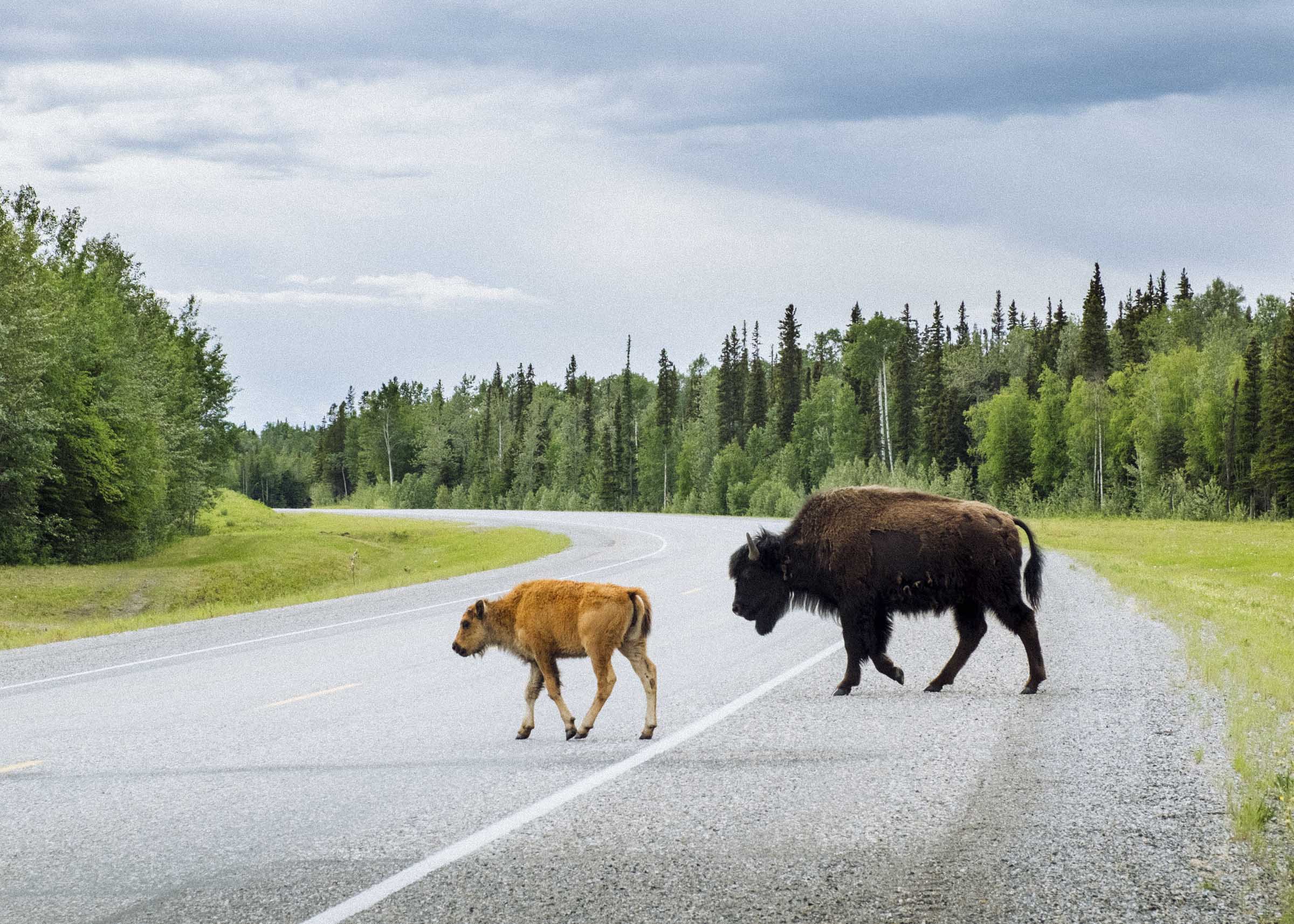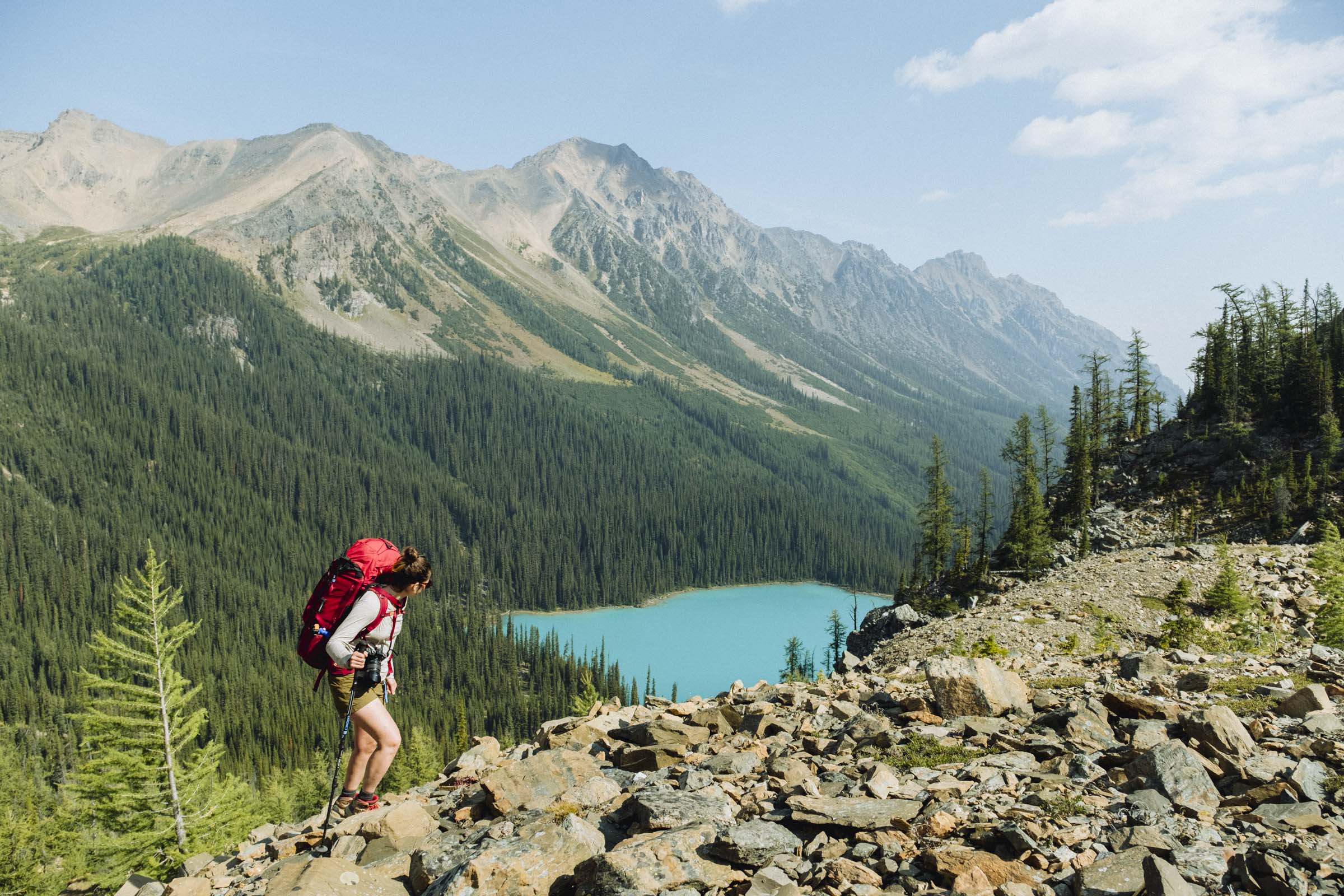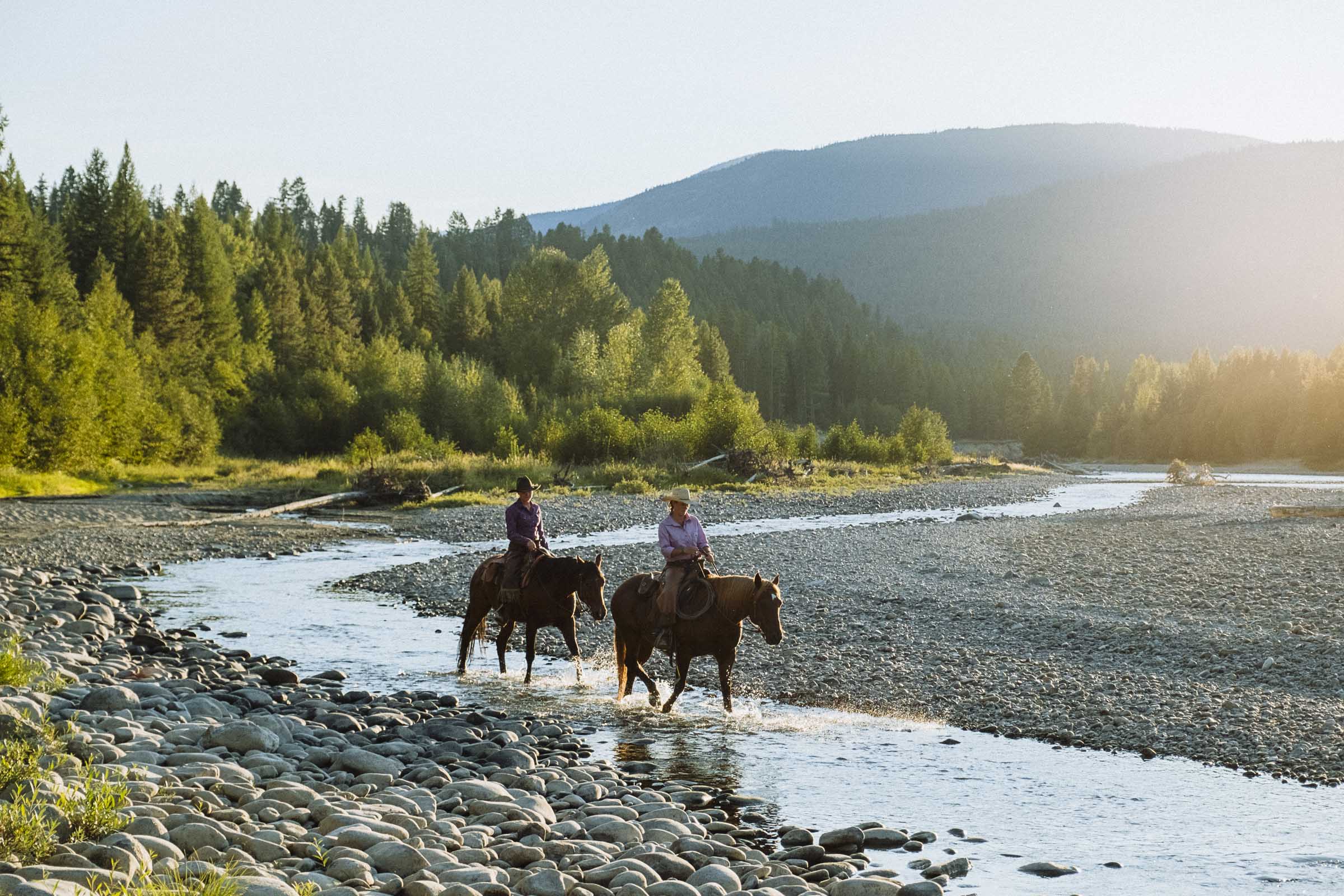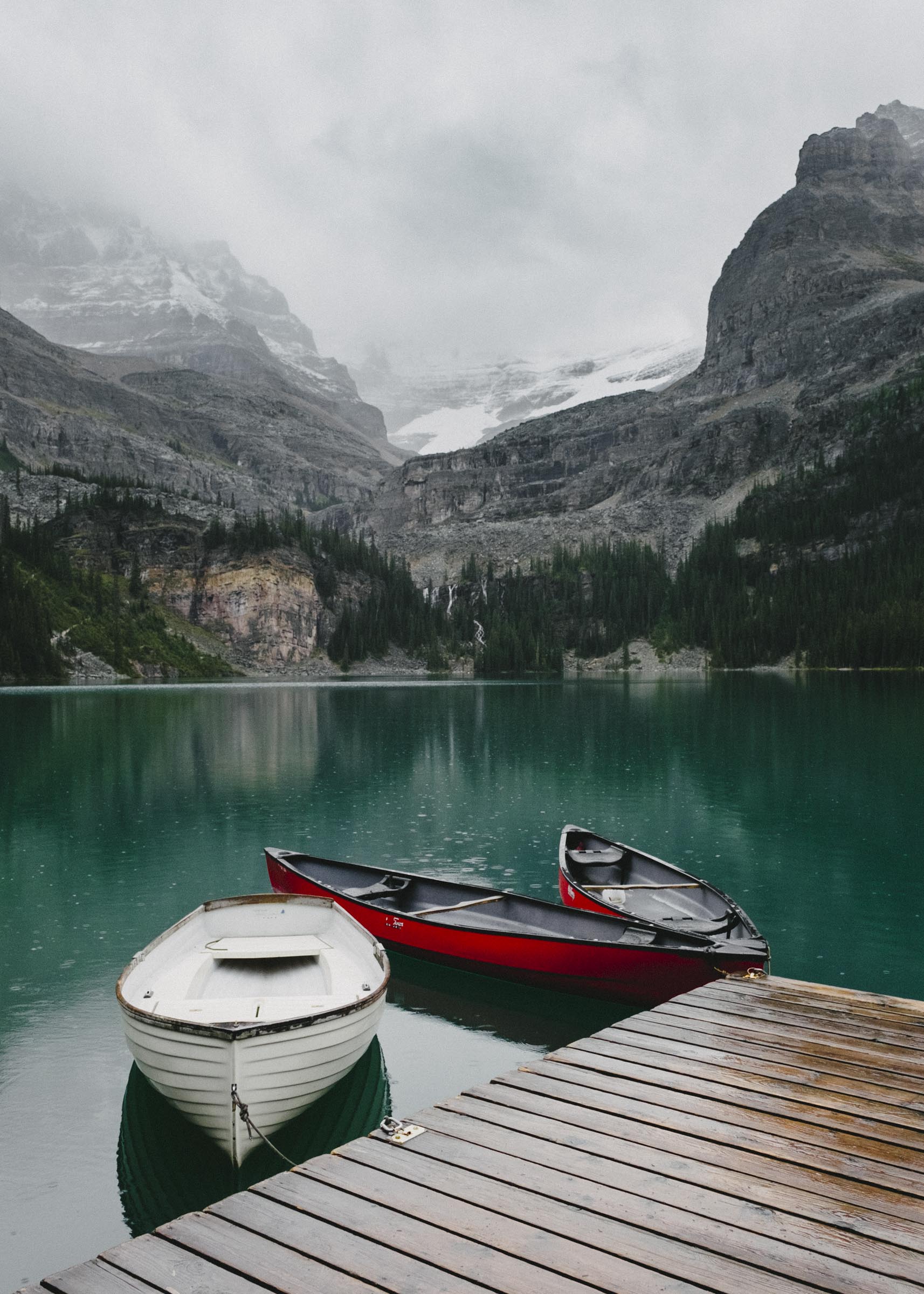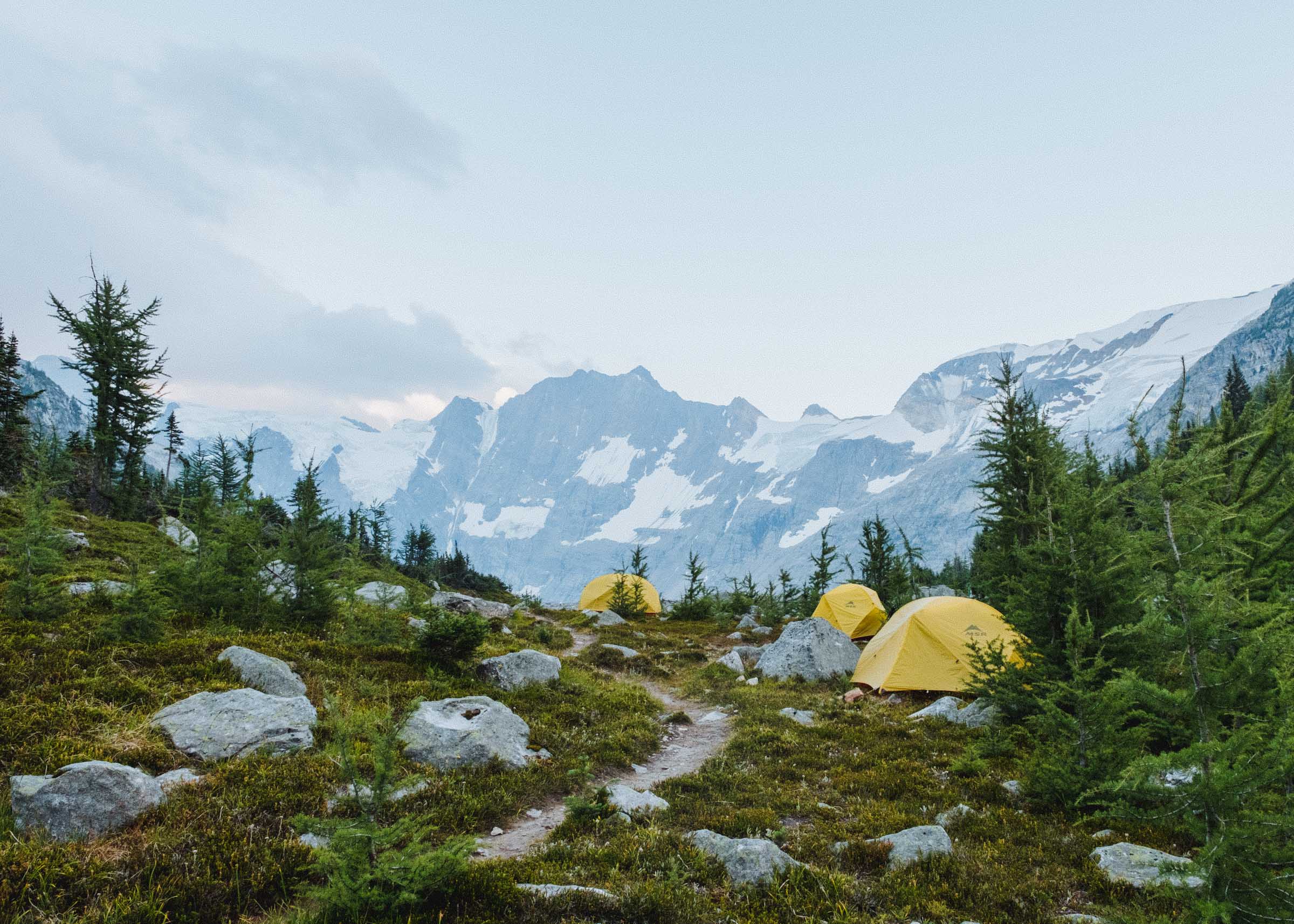Hiking the Berg Lake Trail
BC's iconic Rocky Mountain hike
There are few places more densely packed with bucket list-worthy locations than the Rocky Mountains. With soaring peaks, wild wooded valleys, and postcard-perfect views in every direction, it's the kind of place everyone should try visit at least once... and there's no better place to start than with a backcountry trek to Berg Lake.
Curling around the base of Mt Robson — the tallest peak in the Canadian Rockies — the Berg Lake trail is a stunning hike through some of the most varied and beautiful terrain anywhere: old growth cedar forests, sparkling blue lakes, thundering waterfalls, towering mountains, and magnificent glaciers. A moderate 46km there-and-back route with optional side-trails, Berg Lake is best described as a multi-day effort. We were on our way up to Dawson Creek to start driving the Alaska Hwy, but hell ya we could spare 2 days no prob.
BEFORE YOU GO

Just west of the Continental Divide, Mt Robson is a big chunky towering thing, dwarfing all its neighbours and perennially covered in snow. Approaching from the west it looms picturesquely over the highway looking more like a rockwall than a mountain, a stalwart guardian at the entrance to the Canadian Rockies and the world's largest collection of protected areas.
Like most beautiful trails it can get busy — even with 7 campgrounds scattered along the trail, if you plan on overnighting you should try to reserve a camping spot well ahead of time. Like normal, we just showed up without reservations in early June and somehow got a spot, but in July or August this might be prove more difficult. Or if you just plan on hiking for the day there are no such restrictions.








One of the premier joys of the Berg Lake Trail is just how flat and easygoing a lot of it is. It's a long trail, sure, but much of it is over flat alluvial plains with only a couple inclines and one steeprer section of switchbacks. There is ample opportunity to look around and admire the views, and the terrain varies so much that it can feel like a real overland adventure.
The trail starts as an old access road through dark cedar forest before popping out at scenic Kinney Lake. There are nice picnic spots, and many hikers feel satisfied stopping here. If you do continue on, you'll skirt the lake and cross large sections of boulders and massive washouts, and reach the first campground just before the end of the lake. Then you cross the valley via a series of skinny plank bridges over the braided stream, ascend the hill to Whitehorn and the Valley of a Thousand Falls.
Streams of variable colours intermix in the valley and tumbling mists of distant waterfalls paint the rocks above. It's a beautiful spot, and at the halfway mark the perfect location for a ranger cabin and the second campground. If you aren't camping take a moment to fill up your water bottles and enjoy a snack: the biggest hill of the trail waits just up ahead.





By the time we reached Berg Lake the sun had set and we were exhausted. It's a long hike! If you have a couple extra days, we definitely recommend breaking it up into sections, and to explore some of the trails above and beyond the lake — Hargreaves Glacier, Toboggan Falls, Mumm Basin, Snowbird Pass. From what we hear it would be more than worth it. Next time!
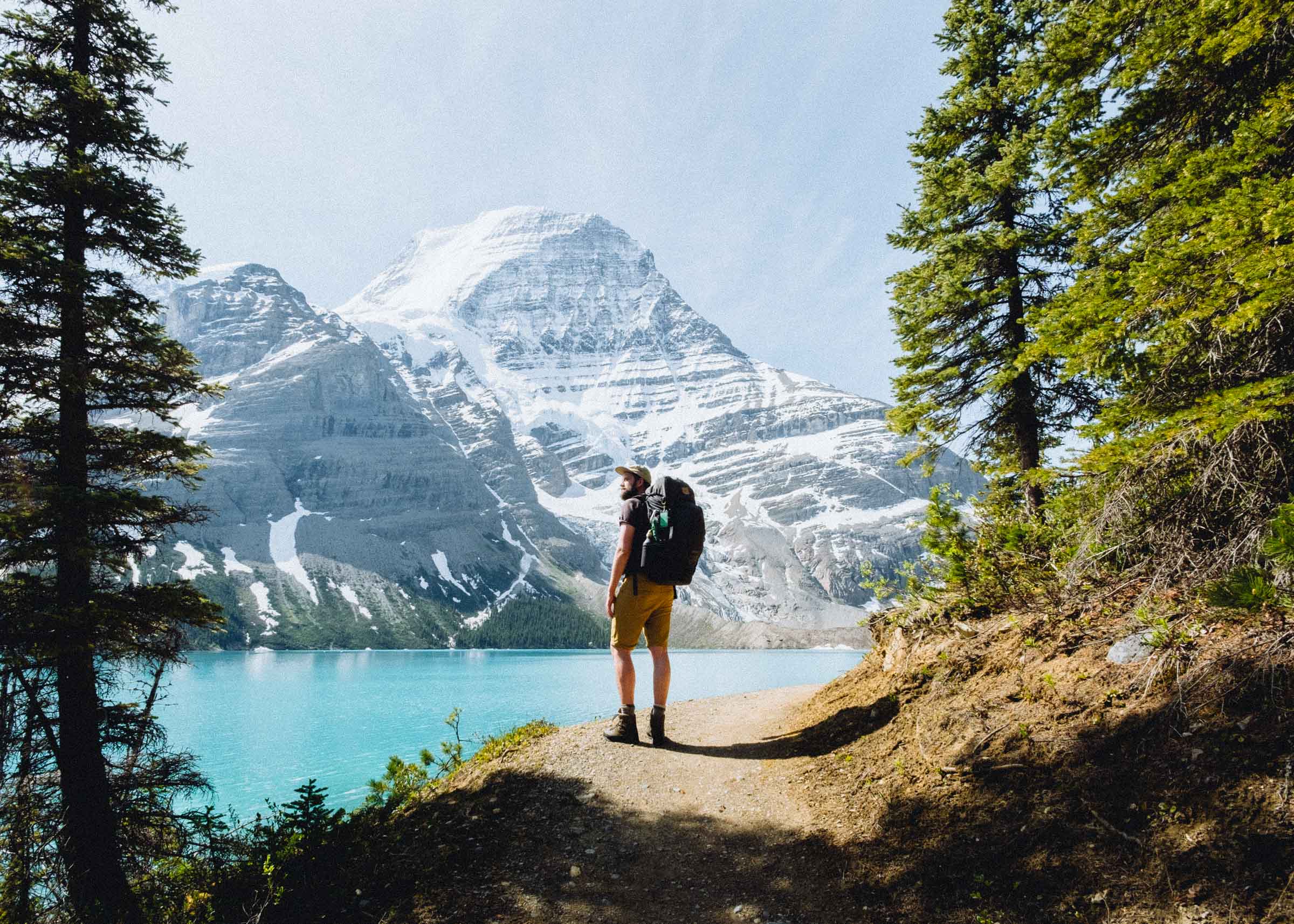

Named after the chunks of glacier that calve off and float around the lake, we had read that icebergs are plentiful well into summer. Maybe our timing was unlucky or maybe it was a sign of warmer seasons to come, but we only saw one weird little berg. The constant crack and thundering roar of the glacier is ever-present though, a constant promise of new bergs to come.
The following morning we woke to watch the lake slowly transition from somber green-grey to a dazzling sparkling blue as the light hit it. We cooked up some breakfast on the rocky shore, decamped, and started making our way back down the mountain.
It was a long 21km trek back to our car, but the fresh mountain air kept us invigorated, the resplendent views kept as eager and interested. An extra day or two would've been ideal, but there were still many miles to cover and still so much to see.









